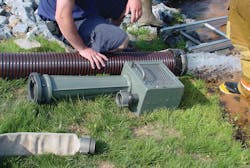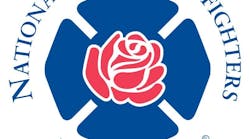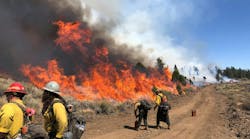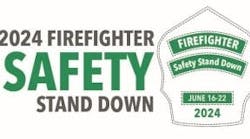Virtually every small-community fire department can benefit from implementing a few of the many technological innovations available in the fire industry today. The choices, for example, can range from using online firefighter training programs all the way to buying new hardware and suppression agents to increase firefighting capability. Because costs range from a couple of hundred to several thousand dollars, these choices are also compatible with budgets found in many rural fire organizations.
This article presents a quick review of three innovations that any small-community fire department may consider.
Online training
Continuing training and education for new recruits and veteran firefighters is always a top priority in the pursuit to increase firefighter safety, retain volunteers and operate more effectively. Questions commonly heard from volunteer firefighters are, “How do I get continuing education and training? Will education fit around my work schedule? Can I continue my education locally? How far will I need to travel to take classes?”
Adding online education to your department’s menu of training activities makes good sense; it can provide a solution to the small-community fire department problems of tight budgets, travel obstacles and member training availability. A real benefit is that while firefighters are on their computers learning at their own pace, on drill nights and weekends your department’s training staff is free to accomplish other important hands-on fire training objectives using a person-to-person approach. This means that training can become more effective by allocating added instructional time to essential training needs within your fire department.
The cost for online training can vary from a few hundred to a few thousand dollars. For example, the Rural Firefighting Academy (livefiretraining.com) offers a 17-module “Rural Firefighting Operations” online course for $175, which includes the course textbook and model standard operating procedures (SOPs). This course provides rural-specific firefighting information intended to assist firefighters and fire officers to meet day-to-day operational challenges found in the small-community fire department.
At TrainingDivision.com, firefighters can find a course that covers Firefighter I and II and HazMat Awareness and Operations advertised for $2,500. This program has an online self-study component and a two-week extensive “Boot Camp” at its facility in Texas, where experienced instructors work with students until they have mastered each skill.
Drafting eductors
Increasing water-delivery capability remains an important consideration during the planning process of rural drafting operations. For small-community fire departments that have difficult to access water sources – those that require long suction hoselays or deep lifts – implementing the use of a drafting eductor can significantly increase water-delivery performance.
One such device is the TurboDraft (see turbodraft.net). Using eductor technology and water pressure from the supply engine/pumper, the TurboDraft is a combination eductor/suction strainer that provides energy at the base of a hard-suction hose assembly to overcome lift. Using this device can lead to significant increases in water-delivery rates from draft.
The unit attaches to the base of the assembly much like an ordinary suction strainer. The major difference is that a 2½-inch hoseline from a pump discharge is connected to the inlet of the eductor to provide water horsepower. This power is used by a jet inside the eductor to force water through the five-inch eductor discharge and six-inch hard-suction hose to the intake of the pumper. According to TurboDraft specifications, the five-inch unit uses 200 gpm when pumped at the recommended 150 psi.
What can the TurboDraft do to increase rural drafting performance? In one challenging draft test scenario – 65 feet of six-inch suction hose with a 13-foot lift – an engine with a 1,000-gpm pump flowed 890 gpm, an increase of 272 gpm, or 44% over the discharge provided without using the eductor, through draft.
Under the same set of conditions, using an engine with a 2,000-gpm pump, the discharge was 1,118 gpm, an increase of 105 gpm, or 10%, over the discharge provided without using the eductor, through draft.
While this was one test, under one set of suction conditions, expect increased performance under more challenging drafting conditions. The cost of the five-inch TurboDraft eductor is advertised at $2,995.
Class A foam
The concept is simple. Adding Class A foam concentrate to water doubles the water’s fire suppression effectiveness by forming a foam solution that, when applied to the surface of a Class A fuel, spreads out and wets the surface of the fuel. The solution then penetrates the surface to absorb heat and cool the fuel faster than plain water would. Adding compressed air to Class A foam solution forms a foam bubble blanket that increases the water’s effectiveness by up to five times.
While firefighting foams of various types have existed since the late 1800s, most of them were designed for use on flammable liquids and other Class B fuels. The only foams intended for use on Class A fires were the high-expansion (200 to 1,000:1 expansion rates) types originally developed for fighting fires in coal mines. These foams are best used as smothering agents when they are forced into compartments to displace air. With such high expansion rates, they contain very little water, prohibiting them from performing significant cooling.
Today’s Class A foam technology is completely different from that of the past. Today’s Class A foams not only provide water with wetting properties, but enable it to form bubbles that cling to Class A fuels. This clinging ability holds the water on the fuel surface so that more of it is effectively used for cooling the fuel.
The expense required to get involved with using Class A foam can start from as little as a few hundred dollars for several five-gallon buckets of concentrate. The concentrate can be batch mixed in an apparatus booster tank, or mixed with water by using an in-line eductor that a department may already own.
For more information on Class A foam, go to the A Foam Authority website (found at afoam.org). It is a non-profit trade association organized to promote a focused effort to deliver accurate information about the benefits of Class A foam.
Summary
Over the next decade, the primary drivers for small-community fire departments to become involved with and implement new technology will continue to be increased firefighter safety and basic cost/benefit concerns. Only a department can decide what technologies best fit its specific needs and conditions. During the process, departments are urged to keep in mind that new technology requires departmental training and education to be implemented effectively. This article provides ideas for departments to consider when they are ready to evaluate which technologies best fit their needs and budgets.
Dominic Colletti will present “New Technology and Rural Firefighting Operations” at Firehouse Expo 2013, July 23-27 in Baltimore, MD.






